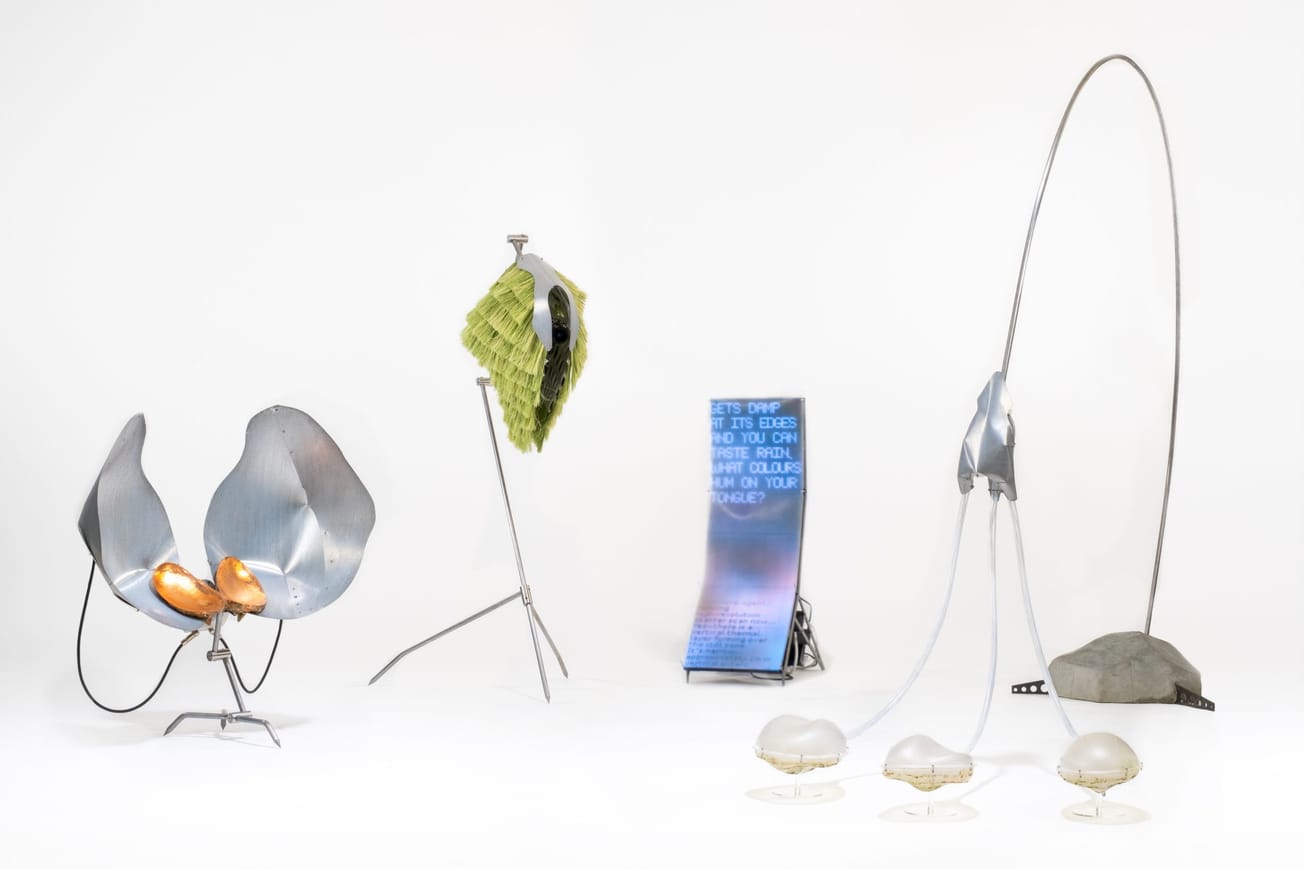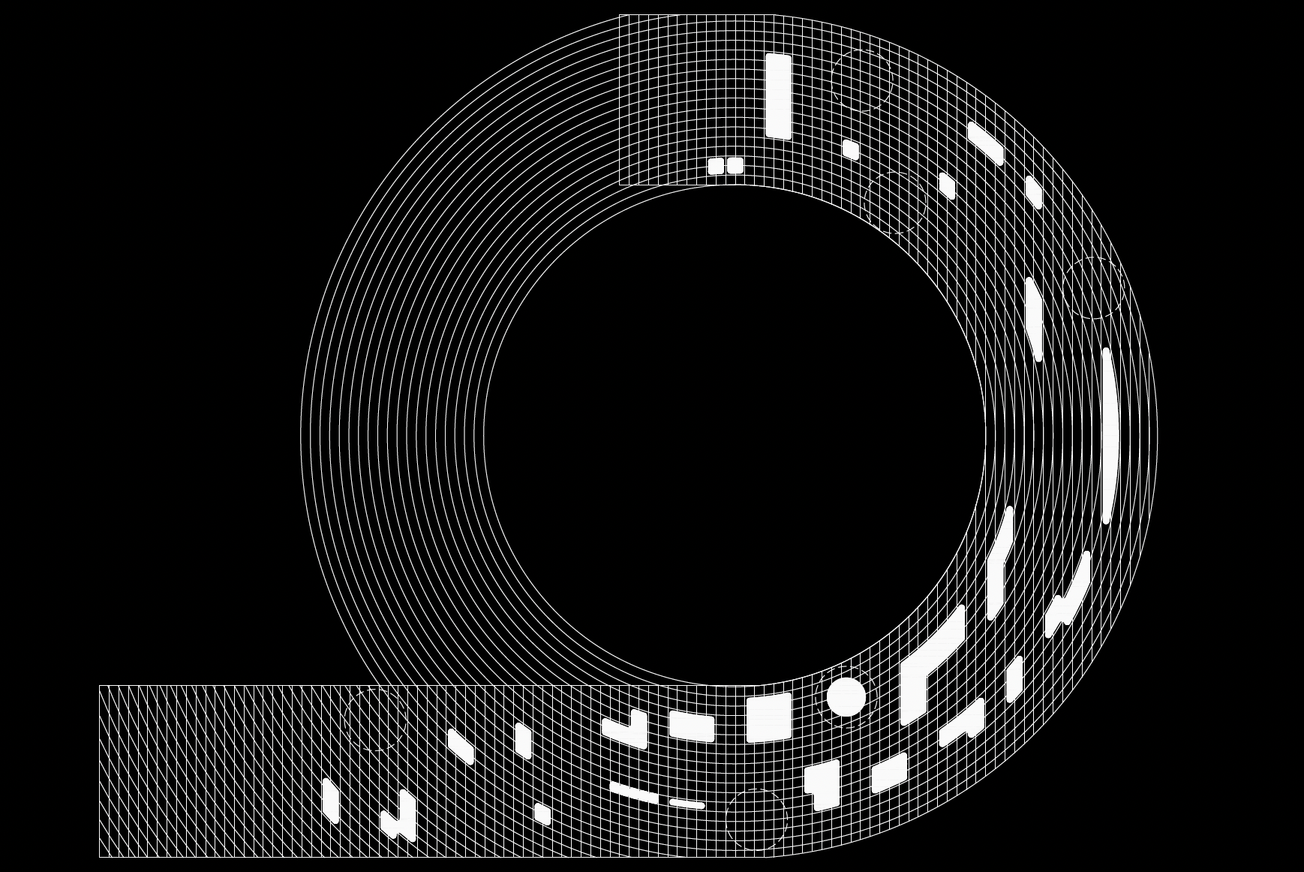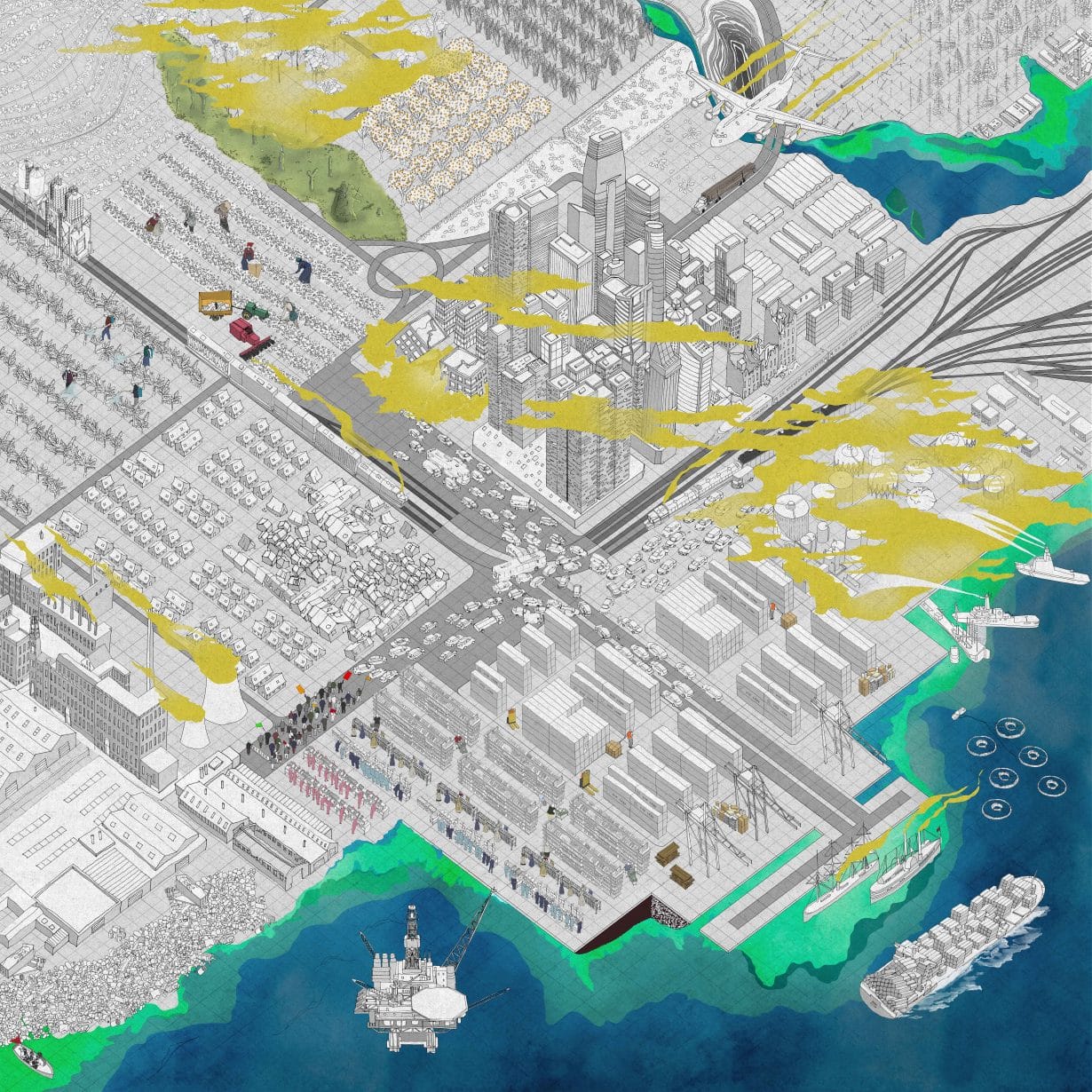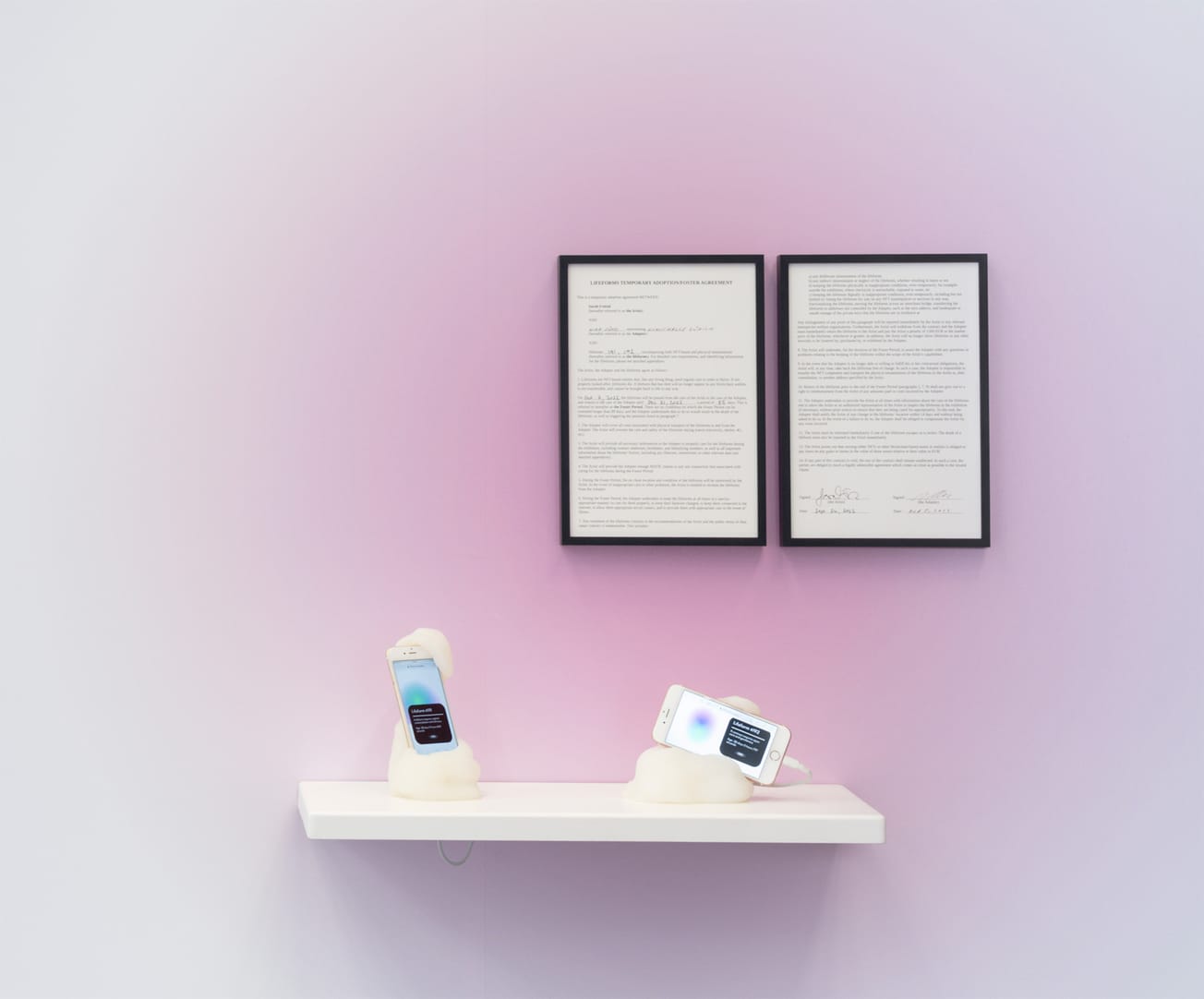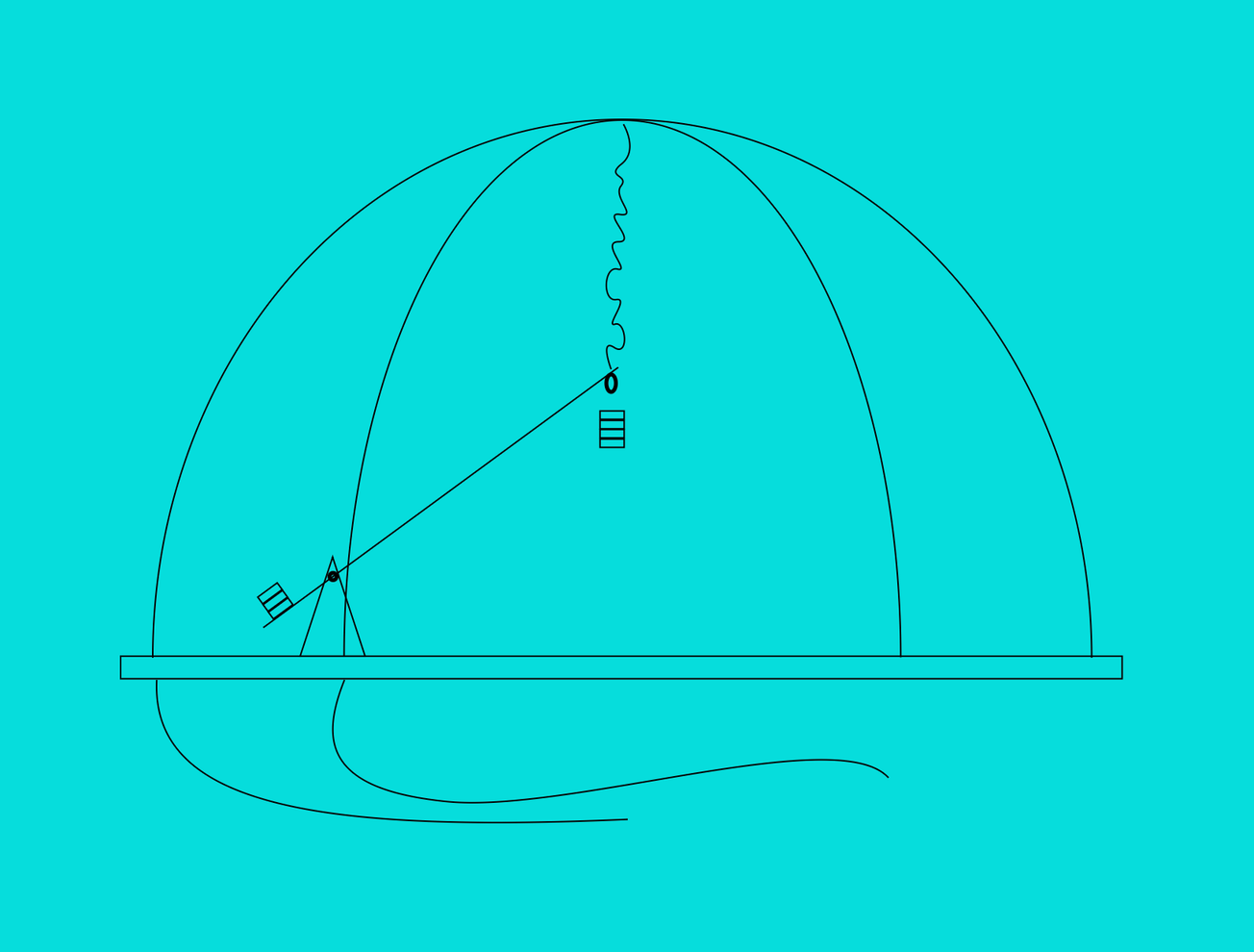At the Design Museum in London, Superflux’s Nobody Told Me Rivers Dream positions artificial intelligence not as a tool of extraction, but as an act of listening—reorienting technology toward sensitivity, attention, and reciprocity. Conceived for the River Thames, the project transforms data into a collaborative sensory dialogue with the living world.
Superflux—founded by designers Anab Jain and Jon Ardern—has long used speculative design to probe the social, political, and ecological implications of emerging technologies. Projects such as Mitigation of Shock (2019) and Refuge for Resurgence (2021) imagined how communities might adapt to environmental change. Nobody Told Me Rivers Dream extends that inquiry, shifting from preparation for crisis toward cultivating awareness within the present.
Listening, Not Measuring
The installation features three handcrafted sensor-objects conceived for placement along the Thames, each capturing a facet of the river’s ecosystem—birdsong, tidal flow, and atmospheric conditions—through embedded sensors and microphones. Environmental data from these instruments feeds into a generative AI process that produces poetic, reflective outputs rather than analytical ones.

In form, the sculptures are neither machines nor monuments. Made from organic materials, copper leaf, and naturally patinated metal, they appear as if grown from the riverbank itself. Their biomorphic language draws from shells and sediment, merging technological sensing with ecological materiality.

By emphasizing noticing over measurement, Superflux reframes AI as an instrument for perception. The river becomes an active participant—its tides, birds, and weather shaping the system’s behavior. The exchange invites humans to listen rather than command, reconfiguring the usual hierarchy between intelligence and environment.
AI Beyond the Lab
AI, as typically conceived, remains an invisible infrastructure—coded in data centers, optimized for efficiency, and scaled across global networks. Nobody Told Me Rivers Dream counters that abstraction by localizing intelligence: embedding it in specific materials and sensory experiences. A compact computational device synthesizes the captured data into generative visual and textual responses. What matters is not processing power but orientation. Here, AI becomes an act of attunement, surfacing resonances between the river’s rhythms and human language.
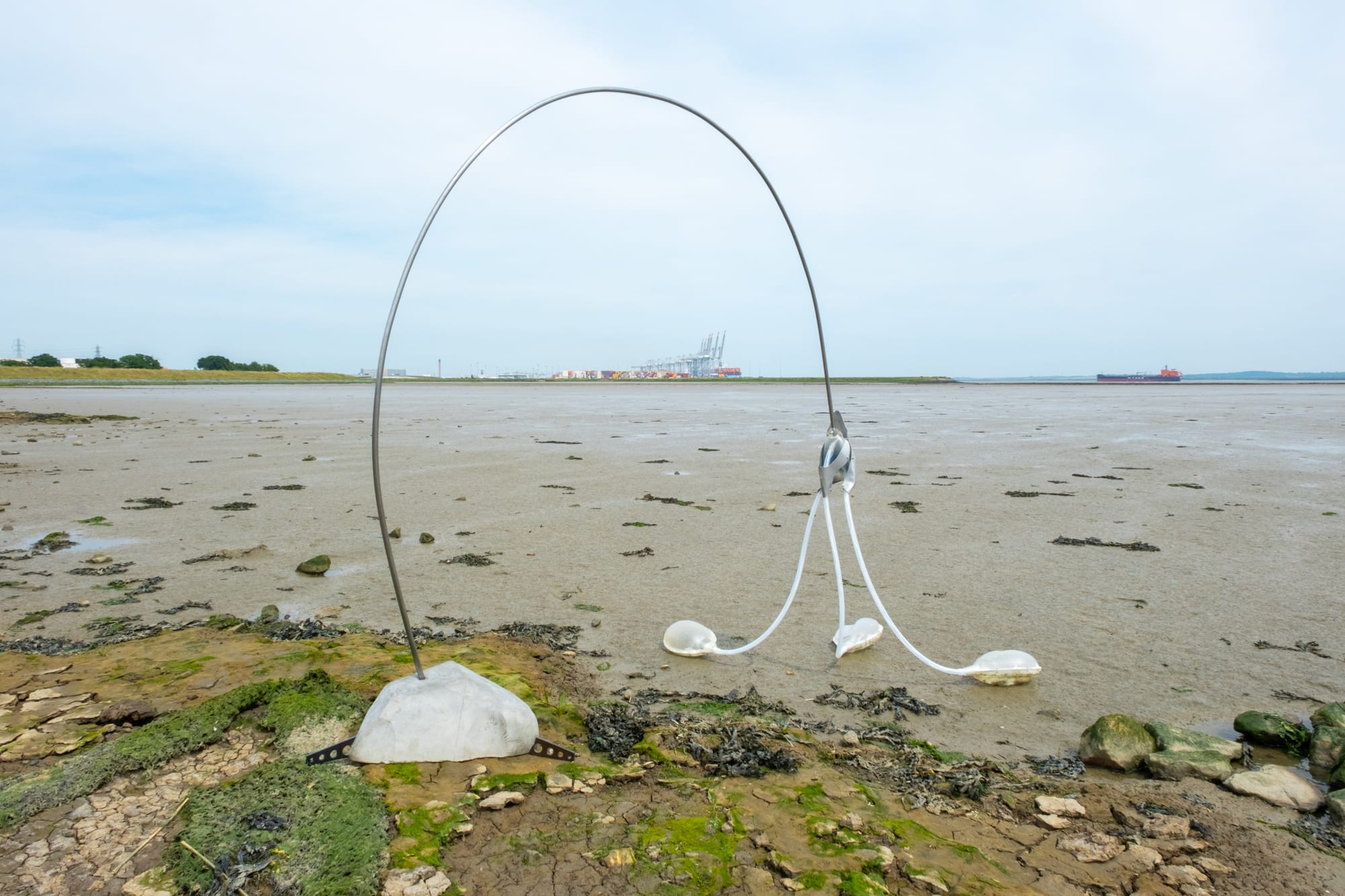
The choice of the Thames is deliberate. Both infrastructural and symbolic, the river embodies centuries of trade, industry, and ecological transformation. By situating the project in this context, Superflux prompts reflection on what forms of knowledge—ecological, cultural, or sensory—have been excluded by dominant technological systems. The work draws on folklore and ecological wisdom that regard rivers as living entities, sources of insight rather than resources to manage.
Within ongoing debates around ecological AI, the project questions scale, energy use, and epistemology in data systems. Instead of building ever-larger models, Superflux proposes a modest, situated intelligence—one that listens, adapts, and remains responsive to its environment.
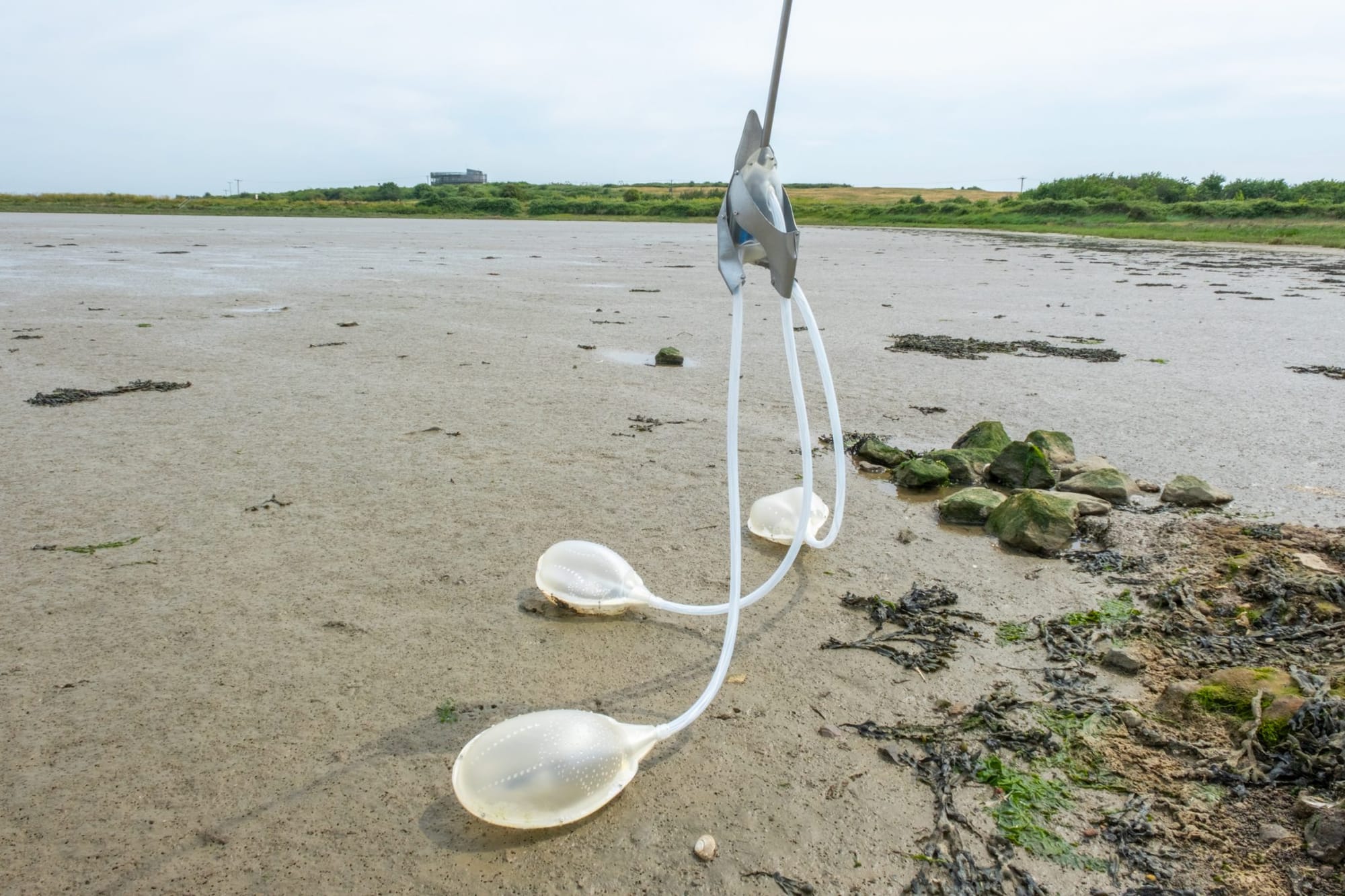
Design as Relationship
For Superflux, design is a mode of relationship-building between humans, technologies, and the more-than-human world. Nobody Told Me Rivers Dream extends this philosophy through multi-sensory layering: sculpture, sound, data, and language form a continuous exchange between systems.
Each sensor-object acts as both scientific instrument and cultural artifact—listening to the environment while performing an act of care. The generative outputs, whether textual or visual, are less interpretations than invitations: traces of how AI might help humans perceive the subtle intelligence of ecosystems.
The project’s aesthetic restraint is central to its impact. It avoids interactive screens and spectacle-driven visualizations, cultivating instead a quiet presence. Viewers encounter the sculptures not as interfaces but as living objects that emit light and motion in quiet sympathy with the river. This minimalism distinguishes the installation from the theatricality often associated with media art, proposing that technological imagination can operate through humility rather than control.
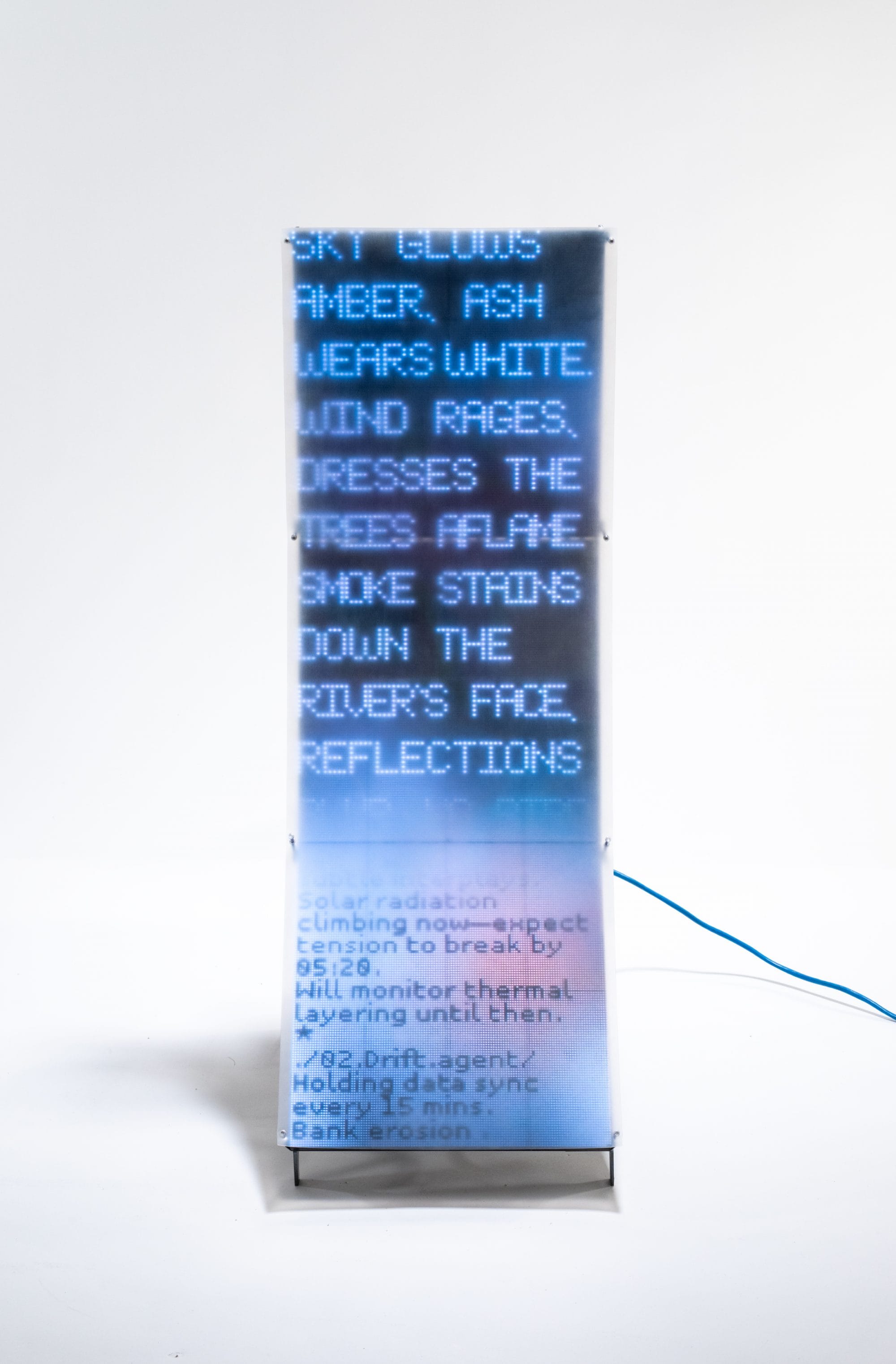
Toward Ecological Intelligence
At its core, Nobody Told Me Rivers Dream asks who or what defines intelligence. By treating the river as both subject and collaborator, Superflux blurs the boundary between computation and ecology. Intelligence becomes relational—distributed across sensors, tides, and the humans who perceive them. The title itself functions as a provocation. If rivers dream, what do they dream of? The phrase gestures toward forms of consciousness and communication that lie beyond human perception yet persist in the natural world. It invites designers and technologists to reconsider the narratives driving AI development, shifting focus from extraction and automation toward reciprocity and care.
The project is a unique demonstration of how emerging tools can cultivate environmental awareness, how digital systems and material craft can coexist, and how speculative design can foster futures grounded in empathy rather than dystopia. As AI infrastructures expand, Nobody Told Me Rivers Dream reminds us that intelligence need not be built from code alone—it may already flow through the living systems that sustain us.

